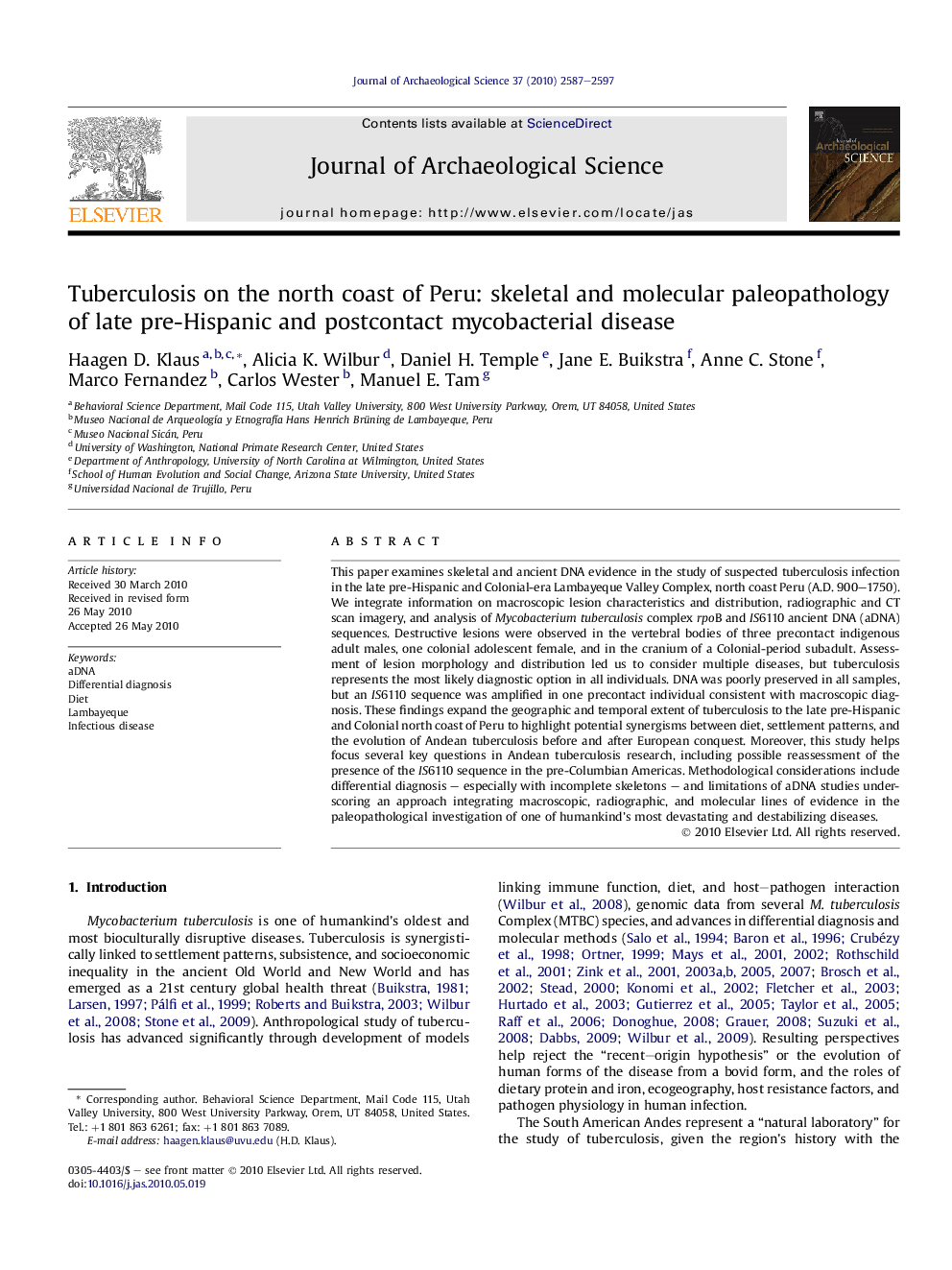| Article ID | Journal | Published Year | Pages | File Type |
|---|---|---|---|---|
| 1035959 | Journal of Archaeological Science | 2010 | 11 Pages |
This paper examines skeletal and ancient DNA evidence in the study of suspected tuberculosis infection in the late pre-Hispanic and Colonial-era Lambayeque Valley Complex, north coast Peru (A.D. 900–1750). We integrate information on macroscopic lesion characteristics and distribution, radiographic and CT scan imagery, and analysis of Mycobacterium tuberculosis complex rpoB and IS6110 ancient DNA (aDNA) sequences. Destructive lesions were observed in the vertebral bodies of three precontact indigenous adult males, one colonial adolescent female, and in the cranium of a Colonial-period subadult. Assessment of lesion morphology and distribution led us to consider multiple diseases, but tuberculosis represents the most likely diagnostic option in all individuals. DNA was poorly preserved in all samples, but an IS6110 sequence was amplified in one precontact individual consistent with macroscopic diagnosis. These findings expand the geographic and temporal extent of tuberculosis to the late pre-Hispanic and Colonial north coast of Peru to highlight potential synergisms between diet, settlement patterns, and the evolution of Andean tuberculosis before and after European conquest. Moreover, this study helps focus several key questions in Andean tuberculosis research, including possible reassessment of the presence of the IS6110 sequence in the pre-Columbian Americas. Methodological considerations include differential diagnosis – especially with incomplete skeletons – and limitations of aDNA studies underscoring an approach integrating macroscopic, radiographic, and molecular lines of evidence in the paleopathological investigation of one of humankind’s most devastating and destabilizing diseases.
